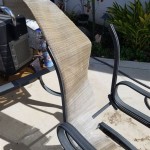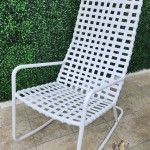Outdoor Patio Designs with Pool: Integrating Style and Functionality
The seamless integration of a patio and pool area represents a significant enhancement to outdoor living spaces. Careful planning and design considerations are crucial to creating a harmonious and functional environment that caters to relaxation, entertainment, and aesthetic appeal. This article explores key aspects of designing outdoor patios with pools, focusing on materials, layout, landscaping, and safety features that contribute to a successful and enjoyable outdoor oasis.
Designing a patio around a pool requires a holistic approach, considering not only the visual aesthetics but also the practical needs of the space. The materials chosen must be durable, slip-resistant, and capable of withstanding exposure to water and sunlight. The layout should optimize space utilization and traffic flow, while landscaping elements should enhance privacy, provide shade, and create a visually appealing backdrop. Further, safety features are paramount, ensuring the well-being of all users of the pool and patio area.
Material Selection: Durability, Aesthetics, and Safety
The choice of materials for an outdoor patio significantly impacts its longevity, appearance, and safety. Several factors must be weighed when selecting the appropriate materials, including durability, resistance to moisture and UV exposure, slip-resistance, and aesthetic compatibility with the surrounding landscape and architecture.
Concrete pavers are a popular choice for pool patios due to their versatility, durability, and affordability. They are available in a wide range of colors, shapes, and textures, allowing for diverse design options. Concrete pavers can be installed in various patterns to create visually appealing surfaces and are relatively easy to maintain. Moreover, they offer good slip resistance when properly sealed and textured.
Natural stone, such as flagstone, travertine, and limestone, provides a more luxurious and natural aesthetic. These materials are highly durable and can withstand harsh weather conditions. However, natural stone can be more expensive than concrete pavers and may require more maintenance to prevent staining and fading. The inherent texture of natural stone typically offers good slip resistance, but it's essential to choose a finish that is not too smooth or polished.
Wood decking, particularly composite decking, offers a warm and inviting look. Composite decking is made from a blend of wood fibers and plastic, making it resistant to rot, decay, and insect infestation. It requires minimal maintenance compared to traditional wood decking and is available in various colors and finishes. However, wood decking can become slippery when wet, so choosing a textured surface or applying a non-slip coating is crucial. The material also tends to heat up in direct sunlight compared to lighter-colored stone or concrete.
Tile is another option for pool patios, offering a wide range of colors, patterns, and textures. Porcelain tile is particularly well-suited for outdoor use due to its water resistance and durability. However, tile can be more expensive to install than other materials and may require more maintenance to prevent grout from cracking or staining. Slip resistance is a significant consideration when selecting tile for a pool patio, so it's essential to choose a tile with a textured surface or apply a non-slip coating.
Layout and Functionality: Optimizing Space and Traffic Flow
The layout of a patio around a pool should maximize space utilization and facilitate smooth traffic flow. Careful consideration should be given to the placement of furniture, walkways, and landscaping elements to create a functional and aesthetically pleasing environment. Several layout strategies can be employed to optimize the use of space and enhance the overall experience.
Zoning the patio area is essential for creating distinct spaces for different activities. A designated dining area with a table and chairs allows for outdoor meals and gatherings. A lounge area with comfortable seating provides a space for relaxation and conversation. A sunbathing area near the pool offers a place to soak up the sun. Defining these zones helps to create a well-organized and functional patio area.
Walkways should be wide enough to accommodate foot traffic and provide easy access to the pool, dining area, and other features. The walkways should be clearly defined and constructed of slip-resistant materials to ensure safety. Consider incorporating curves or changes in elevation to add visual interest and break up the monotony of straight lines.
Furniture placement is crucial for creating a comfortable and inviting atmosphere. Choose furniture that is durable, weather-resistant, and appropriately sized for the space. Arrange furniture to encourage conversation and create a sense of intimacy. Consider adding umbrellas or shade structures to provide protection from the sun.
Consider the pool's shape and location when designing the patio. A rectangular pool may lend itself to a more structured and symmetrical patio layout, while a freeform pool may require a more organic and flowing design. Ensure that the patio area is adequately sized to accommodate the pool and surrounding features without feeling cramped or overcrowded.
Include storage solutions within the patio design to keep pool equipment, toys, and other items organized and out of sight. Built-in benches with storage compartments or freestanding storage sheds can provide convenient and discreet storage options.
Landscaping and Ambiance: Creating a Serene and Inviting Environment
Landscaping plays a crucial role in enhancing the ambiance of an outdoor patio with a pool. Plants, trees, and other landscape features can provide privacy, shade, and visual interest, creating a serene and inviting environment. Careful selection and placement of landscaping elements can transform a simple patio into a lush and relaxing oasis.
Privacy is a key consideration when designing landscaping around a pool patio. Hedges, shrubs, and trees can be strategically planted to create a natural barrier that shields the patio from neighboring properties or busy streets. Evergreen plants provide year-round privacy, while deciduous plants offer seasonal color and interest.
Shade is essential for creating a comfortable and enjoyable outdoor space. Trees provide natural shade, while pergolas, arbors, and umbrellas offer more controlled shade options. Consider the position of the sun when planning shade structures to ensure that the patio area is adequately shaded during peak hours.
Plant selection is crucial for creating a visually appealing and low-maintenance landscape. Choose plants that are well-suited to the local climate and soil conditions. Drought-tolerant plants are a good choice for areas with limited water resources. Consider the size and growth habit of plants to ensure that they do not obstruct views or overcrowd the patio area.
Incorporate a variety of textures, colors, and forms into the landscape design to create visual interest. Use ornamental grasses, flowering plants, and foliage plants to add depth and dimension to the landscape. Consider the seasonal changes in plant appearance to ensure that the patio area remains attractive throughout the year.
Lighting is an important element of outdoor ambiance. Strategically placed landscape lighting can enhance the beauty of the landscaping and create a warm and inviting atmosphere. Use a combination of uplighting, downlighting, and path lighting to illuminate key features and create a sense of depth. String lights and lanterns can add a touch of whimsy and romance to the patio area.
Water features, such as fountains, waterfalls, or ponds, can add a sense of tranquility and relaxation to the patio area. The sound of running water can be soothing and can help to mask unwanted noise. Water features can also attract birds and other wildlife, adding to the natural ambiance of the space.
Safety Features: Ensuring a Secure and Enjoyable Environment
Safety is paramount when designing an outdoor patio with a pool. Several safety features should be incorporated into the design to prevent accidents and ensure the well-being of all users of the pool and patio area. These features should address potential hazards such as slips and falls, drowning, and electrical shock.
Pool fencing is a crucial safety measure, particularly for families with young children. A pool fence should be at least four feet tall and have a self-closing and self-latching gate that is inaccessible to children. The fence should completely surround the pool area, preventing unsupervised access.
Slip-resistant surfaces are essential for preventing slips and falls around the pool area. Choose materials with a textured surface or apply a non-slip coating to smooth surfaces. Regularly clean and maintain the patio surface to remove algae, moss, and other slippery substances.
Pool covers can help to prevent accidental drowning when the pool is not in use. Safety pool covers are designed to support the weight of a person and prevent them from falling into the water. Automatic pool covers provide added convenience and safety.
Proper lighting is essential for ensuring visibility around the pool area at night. Install adequate lighting to illuminate walkways, steps, and other potential hazards. Consider using motion-sensor lights to deter intruders.
Ground fault circuit interrupters (GFCIs) should be installed on all electrical outlets near the pool to prevent electrical shock. Regularly inspect electrical equipment and wiring for damage.
Post clear and visible safety signs around the pool area, warning of potential hazards and outlining pool rules. Include signs indicating the depth of the water and the location of safety equipment, such as life preservers and reaching poles.
A first-aid kit should be readily available and stocked with essential supplies for treating minor injuries. Ensure that someone on the property is trained in CPR and first aid.
By incorporating these safety features into the design of an outdoor patio with a pool, it is possible to create a secure and enjoyable environment for all.

5 Pool Patio Ideas For Your Backyard Oasis Premier Pools Spas

22 Amazing Pool Design Ideas Pools For Small Yards Backyard

Swimming Pool Design Ideas Landscaping Network

Top 6 Pool Deck Patio Design Ideas Luxury Pools Outdoor Living
Top Pool Deck Design Ideas Landscaping Kitchen Allegheny Butler Westmoreland Pa The Blackwood Group

This New Pool Backyard Will Blow You Away Tour

Pool Remodeling Pompano Beach Backyard Renovation Deerfield Patio Design

Small Backyard No Problem Check Out This Private Rectangular Pool Design Tucked Between The Existing House And R Designs

60 Pool Design Ideas For Every Backyard

Stone Patio With Infinity Pool Waterfall And Fireplace 2024 Ultimate Outdoor Awards
See Also








